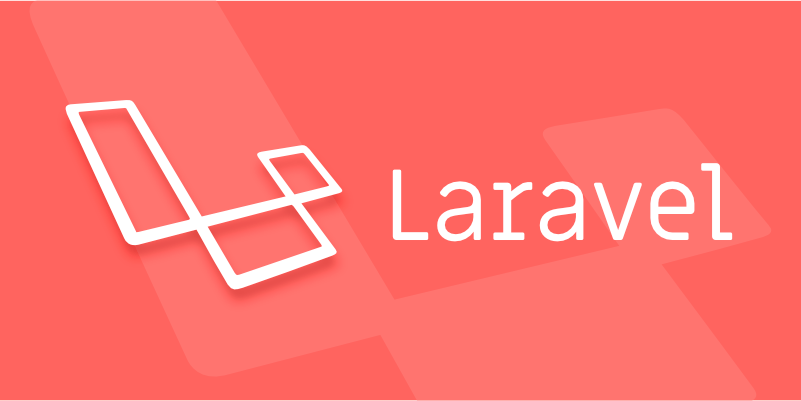Five key points to be noted when deploying Laravel applications to production servers: First, configure the .env file, set APP_ENV to production, APP_DEBUG to false, and run the config:cache, route:cache and view:cache commands to optimize performance; Second, configure Nginx or Apache correctly to ensure that the root directory points to public and hide sensitive paths; Third, set storage and bootstrap/cache directory permissions, generate application keys, and close debug output; Fourth, use Supervisor to manage queue processes to ensure continuous operation of tasks; Fifth, check that all steps are not omitted, especially cache, permissions and security settings, to ensure application stability and security.

Deploying Laravel applications to production servers is not difficult, but some key points must be paid attention to. Many people think that passing the code up and configuring the database is done. In fact, there are still some details that may bring performance problems or even security risks if not handled properly.

Configuring .env and cache optimization
Before the Laravel project is launched, you must ensure that the .env file is configured correctly, especially if APP_ENV is set to production , APP_DEBUG must be false to avoid exposing sensitive information.

Also, don't forget to run the following command to optimize application performance:
-
php artisan config:cache -
php artisan route:cache -
php artisan view:cache
These commands compile configuration, routes, and views into cache files, greatly improving loading speed. If you use a queue or schedule a task, also confirm that the relevant service has been started and configured correctly.

Web server configuration (Nginx or Apache)
Most production environments use Nginx to host Laravel, and you need to configure a site that points to public/ directory. Taking Nginx as an example, the basic configuration is as follows:
server {
listen 80;
server_name yourdomain.com;
root /path/to/your/laravel/public;
index index.php index.html index.htm;
location / {
try_files $uri $uri/ /index.php?$query_string;
}
location ~ \.php$ {
include snippets/fastcgi-php.conf;
fastcgi_pass unix:/var/run/php/php-fpm.sock;
}
location ~ /\.ht {
deny all;
}
} This configuration ensures that all requests are processed through public/index.php , while hiding other directories to improve security. Apache users can also do similar settings, with the focus on getting the root directory to point to public instead of the entire Laravel project.
File permissions and security settings
Many deployment problems are in permissions. Make sure your storage and bootstrap/cache directories are writable to users running PHP. Usually the following commands can be executed:
-
chmod -R 775 storage bootstrap/cache -
chown -R www-data:www-data storage bootstrap/cache(assuming you are using Ubuntu Nginx)
Also, don't forget to generate the application key ( php artisan key:generate ), otherwise the encryption function will not work properly. Also, close the debug page output to prevent error information from leaking paths or database structures.
Use Supervisor to manage queue processes (if any)
If you use a Laravel queue system, such as Redis or a database-driven task queue, it is recommended to use Supervisor to manage queue consumer processes. Supervisor can automatically restart the crashed worker and keep the queue running continuously.
You can create a configuration file like /etc/supervisor/conf.d/laravel-worker.conf like this:
[program:laravel-worker] process_name=%(program_name)s_%(process_num)02d command=php /path/to/your/laravel/artisan queue:work --sleep=3 --tries=3 autostart=true autorestart=true user=www-data numprocs=4 redirect_stderr=true stdout_logfile=/path/to/your/laravel/storage/logs/worker.log
Then run supervisorctl reread and supervisorctl start laravel-worker:* to start the queue process.
Basically that's it. Deploying Laravel is not complicated, but it is easy to ignore some details, especially caching, permissions, and security aspects. As long as you check it step by step, there will basically be no major problems.
The above is the detailed content of Deploying a Laravel Application to a Production Server?. For more information, please follow other related articles on the PHP Chinese website!

Hot AI Tools

Undress AI Tool
Undress images for free

Undresser.AI Undress
AI-powered app for creating realistic nude photos

AI Clothes Remover
Online AI tool for removing clothes from photos.

Clothoff.io
AI clothes remover

Video Face Swap
Swap faces in any video effortlessly with our completely free AI face swap tool!

Hot Article

Hot Tools

Notepad++7.3.1
Easy-to-use and free code editor

SublimeText3 Chinese version
Chinese version, very easy to use

Zend Studio 13.0.1
Powerful PHP integrated development environment

Dreamweaver CS6
Visual web development tools

SublimeText3 Mac version
God-level code editing software (SublimeText3)

Hot Topics
 What are policies in Laravel, and how are they used?
Jun 21, 2025 am 12:21 AM
What are policies in Laravel, and how are they used?
Jun 21, 2025 am 12:21 AM
InLaravel,policiesorganizeauthorizationlogicformodelactions.1.Policiesareclasseswithmethodslikeview,create,update,anddeletethatreturntrueorfalsebasedonuserpermissions.2.Toregisterapolicy,mapthemodeltoitspolicyinthe$policiesarrayofAuthServiceProvider.
 How do I install Laravel on my operating system (Windows, macOS, Linux)?
Jun 19, 2025 am 12:31 AM
How do I install Laravel on my operating system (Windows, macOS, Linux)?
Jun 19, 2025 am 12:31 AM
Yes,youcaninstallLaravelonanyoperatingsystembyfollowingthesesteps:1.InstallPHPandrequiredextensionslikembstring,openssl,andxmlusingtoolslikeXAMPPonWindows,HomebrewonmacOS,oraptonLinux;2.InstallComposer,usinganinstalleronWindowsorterminalcommandsonmac
 What are controllers in Laravel, and what is their purpose?
Jun 20, 2025 am 12:31 AM
What are controllers in Laravel, and what is their purpose?
Jun 20, 2025 am 12:31 AM
The main role of the controller in Laravel is to process HTTP requests and return responses to keep the code neat and maintainable. By concentrating the relevant request logic into a class, the controller makes the routing file simpler, such as putting user profile display, editing and deletion operations in different methods of UserController. The creation of a controller can be implemented through the Artisan command phpartisanmake:controllerUserController, while the resource controller is generated using the --resource option, covering methods for standard CRUD operations. Then you need to bind the controller in the route, such as Route::get('/user/{id
 How do I customize the authentication views and logic in Laravel?
Jun 22, 2025 am 01:01 AM
How do I customize the authentication views and logic in Laravel?
Jun 22, 2025 am 01:01 AM
Laravel allows custom authentication views and logic by overriding the default stub and controller. 1. To customize the authentication view, use the command phpartisanvendor:publish-tag=laravel-auth to copy the default Blade template to the resources/views/auth directory and modify it, such as adding the "Terms of Service" check box. 2. To modify the authentication logic, you need to adjust the methods in RegisterController, LoginController and ResetPasswordController, such as updating the validator() method to verify the added field, or rewriting r
 How do I use Laravel's validation system to validate form data?
Jun 22, 2025 pm 04:09 PM
How do I use Laravel's validation system to validate form data?
Jun 22, 2025 pm 04:09 PM
Laravelprovidesrobusttoolsforvalidatingformdata.1.Basicvalidationcanbedoneusingthevalidate()methodincontrollers,ensuringfieldsmeetcriterialikerequired,maxlength,oruniquevalues.2.Forcomplexscenarios,formrequestsencapsulatevalidationlogicintodedicatedc
 How do I escape HTML output in a Blade template using {{{ ... }}}? (Note: rarely used, prefer {{ ... }})
Jun 23, 2025 pm 07:29 PM
How do I escape HTML output in a Blade template using {{{ ... }}}? (Note: rarely used, prefer {{ ... }})
Jun 23, 2025 pm 07:29 PM
InLaravelBladetemplates,use{{{...}}}todisplayrawHTML.Bladeescapescontentwithin{{...}}usinghtmlspecialchars()topreventXSSattacks.However,triplebracesbypassescaping,renderingHTMLas-is.Thisshouldbeusedsparinglyandonlywithfullytrusteddata.Acceptablecases
 Selecting Specific Columns | Performance Optimization
Jun 27, 2025 pm 05:46 PM
Selecting Specific Columns | Performance Optimization
Jun 27, 2025 pm 05:46 PM
Selectingonlyneededcolumnsimprovesperformancebyreducingresourceusage.1.Fetchingallcolumnsincreasesmemory,network,andprocessingoverhead.2.Unnecessarydataretrievalpreventseffectiveindexuse,raisesdiskI/O,andslowsqueryexecution.3.Tooptimize,identifyrequi
 How do I mock dependencies in Laravel tests?
Jun 22, 2025 am 12:42 AM
How do I mock dependencies in Laravel tests?
Jun 22, 2025 am 12:42 AM
TomockdependencieseffectivelyinLaravel,usedependencyinjectionforservices,shouldReceive()forfacades,andMockeryforcomplexcases.1.Forinjectedservices,use$this->instance()toreplacetherealclasswithamock.2.ForfacadeslikeMailorCache,useshouldReceive()tod






